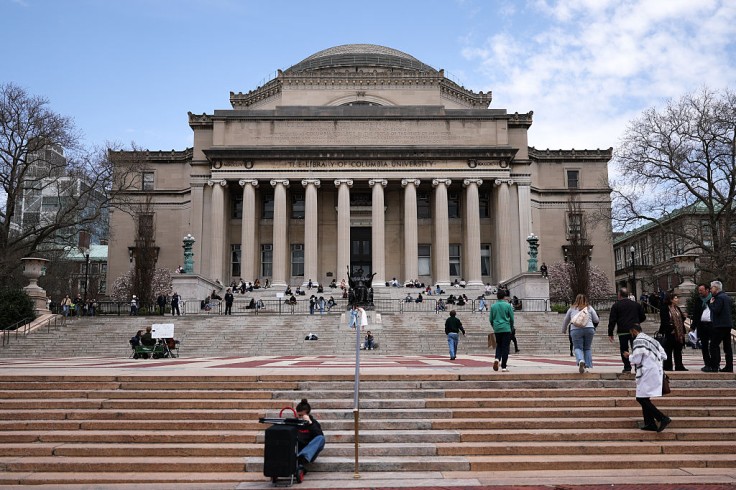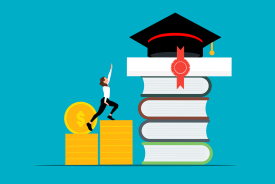
New York City just elected its youngest mayor in over a century. Here's how his bold plan could revolutionize higher education—or face insurmountable obstacles.
Breaking: NYC's Historic Mayoral Victory Brings University Reform to Center Stage
New York City has made history. Zohran Mamdani, a 34-year-old democratic socialist assemblymember, won the 2025 mayoral race with over 2 million votes, becoming the youngest mayor in more than a century, the first Muslim mayor, and the first of South Asian descent to lead America's largest city.
But this isn't just a political milestone. For the 240,000 students at the City University of New York (CUNY) and the broader higher education community, Mamdani's victory could mark the beginning of the most dramatic transformation in public university funding in 50 years.
Why This Election Matters Now: The CUNY Crisis Explained
Before diving into Mamdani's plans, you need to understand the current reality. CUNY is in crisis.
The shocking statistics:
- Only 8% of CUNY buildings are in good repair
- 300 faculty and staff positions eliminated in recent years
- More than 80% of students are city residents from low-income households
- CUNY propels nearly six times as many low-income students into the middle class as all Ivy League colleges combined
- Yet adjunct professors—who teach a significant portion of classes—earn so little that some have experienced homelessness
Students have nicknamed Brooklyn College "Broke-lyn College." The system that once offered free tuition in the 1970s now charges thousands of dollars per year, pushing working-class students to juggle multiple jobs while attending classes.
Mamdani's Revolutionary Plan: The New Deal for CUNY
During his State Assembly tenure and mayoral campaign, Mamdani championed what he calls the "New Deal for CUNY." Here's what it includes:
1. Free Tuition for All CUNY Students
Mamdani wants to eliminate tuition entirely across all 25 CUNY campuses, restoring the system to its original 1970s promise. The funding would come from increased taxes on corporations and individuals earning over $1 million annually.
What this means: Every New York City resident could attend college tuition-free, removing the biggest barrier to higher education for working-class families.
2. Pay Parity for Adjunct Faculty
Currently, adjunct professors at CUNY earn poverty-level wages despite often holding advanced degrees and teaching the same courses as full-time faculty. Mamdani proposes creating pay parity between adjuncts and full-time professors.
What this means: Thousands of educators would receive fair compensation, improving faculty retention and educational quality.
3. Massive Infrastructure Investment
With 92% of buildings in disrepair, Mamdani plans major infrastructure improvements to modernize facilities and create safe learning environments.
What this means: No more leaking ceilings, broken heating systems, or unsafe conditions that currently plague many CUNY campuses.
4. Mental Health and Academic Support Expansion
His plan includes adequate funding for mental health services and hiring more academic advisors to support student success.
What this means: Students would have access to the support services essential for completing their degrees.
5. Community to Classroom Program
A city-funded tuition assistance program offering up to $12,000 annually for future teachers who commit to teaching in NYC public schools.
What this means: Direct pipeline from CUNY to NYC classrooms, addressing teacher shortages while making college affordable.
The Game-Changer: The REPAIR Act Explained
Perhaps Mamdani's most innovative—and controversial—proposal is the REPAIR Act (Repeal Egregious Property Accumulation and Invest It Right), which he co-sponsored with State Senator John Liu.
Here's how it works:
Columbia University is now the largest private landowner in New York City, controlling over 320 properties valued at nearly $4 billion. NYU is also among the top-ten biggest private landlords. Despite their massive real estate empires, both universities pay almost nothing in property taxes thanks to a nearly 200-year-old provision in the New York State Constitution.
The REPAIR Act would require universities whose annual property tax bills would exceed $100 million to pay property taxes, with revenues directed specifically to CUNY funding. This could generate over $300 million annually for the public system.
Why it matters: This would redirect wealth from elite private institutions to the public university system serving working-class New Yorkers—a radical reimagining of education funding.
The Upside: 7 Ways This Could Transform NYC Universities
1. Eliminating the Tuition Barrier
Free tuition would open doors for thousands of students who currently cannot afford college. Combined with Mamdani's free bus proposal, the two largest expenses for commuter students—transportation and tuition—would disappear.
Real-world impact: A single mother working full-time could attend college without accumulating debt or choosing between feeding her children and pursuing education.
2. Dramatically Improved Educational Quality
Adequate funding would allow CUNY to hire more full-time faculty, reduce class sizes, modernize facilities, and expand student support services.
Real-world impact: Students would learn in safe, modern buildings with access to up-to-date technology and adequate academic support.
3. Addressing a Fundamental Injustice
The REPAIR Act tackles a core inequity: elite universities accumulate billions in tax-exempt real estate while the public system crumbles.
Real-world impact: Wealth generated from New York City's geography and infrastructure would support all students, not just the privileged few.
4. Ending Faculty Exploitation
Pay parity for adjuncts would end the two-tier system where qualified educators struggle in poverty while teaching the same courses as their full-time colleagues.
Real-world impact: Talented professors would stay in the CUNY system instead of leaving for better-paying positions elsewhere.
5. Economic Benefits Beyond Education
Research consistently shows that investment in public higher education yields significant economic returns. A stronger CUNY means more educated workers contributing to NYC's economy.
Real-world impact: Every dollar invested in CUNY generates multiple dollars in economic activity and tax revenue.
6. Reducing Student Debt Crisis
With free tuition, CUNY students would graduate debt-free, allowing them to buy homes, start businesses, and contribute to the economy instead of making loan payments.
Real-world impact: An entire generation of New Yorkers could start their adult lives without crushing debt burdens.
7. Political Momentum for Progressive Education
Mamdani's victory with massive grassroots support demonstrates strong public appetite for bold education reform.
Real-world impact: This could inspire similar movements in other cities and states across the country.

The Downside: 8 Major Obstacles and Challenges
1. The Mayoral Authority Problem
Here's the biggest challenge: The NYC mayor has limited direct power over CUNY funding.
CUNY receives funding from both city and state budgets. While the city budget is crucial for CUNY's seven community colleges, the broader system operates under state control. Mamdani needs cooperation from Governor Kathy Hochul and the State Legislature—cooperation that's far from guaranteed.
Reality check: A mayor can propose, but cannot unilaterally implement most CUNY reforms.
2. The Constitutional Amendment Hurdle
The REPAIR Act requires amending the New York State Constitution—one of the most difficult legislative processes in American government.
The process:
- Pass both houses of the State Legislature
- Pass both houses again in the next legislative session
- Win approval in a statewide referendum
This takes years and faces fierce opposition at every step.
Reality check: Even with political will, constitutional amendments rarely succeed.
3. Powerful Opposition from Elite Institutions
Columbia and NYU have enormous resources and influence. They will mount sophisticated legal and lobbying campaigns against the REPAIR Act.
The arsenal they'll deploy:
- High-priced lobbyists
- Legal challenges
- Public relations campaigns
- Mobilization of wealthy alumni and donors
- Arguments about negative economic impacts
Reality check:Fighting institutions with billion-dollar endowments is an uphill battle.
4. Real Estate and Business Community Resistance
Real estate developers, business groups, and wealthy donors have already expressed serious concerns about Mamdani's democratic socialist agenda. These groups wield considerable influence in Albany.
Their arguments:
- Higher taxes will drive businesses out of NYC
- Property tax changes set dangerous precedent
- Plans are financially unrealistic
Reality check:Albany has historically been receptive to business community concerns.
5. The Funding Mathematics Challenge
Mamdani's plans rely on raising taxes on high earners and corporations—measures requiring state approval. Critics argue the math doesn't add up.
Questions to answer:
- Will projected tax revenues materialize?
- Can NYC afford expanded services during economic uncertainty?
- What if high earners leave the city?
- How do you maintain funding if revenues fall short?
Reality check:Progressive tax plans often generate less revenue than projected.
6. Implementation Complexity at Massive Scale
Even with funding secured, implementing free tuition, pay parity, and infrastructure improvements across 25 campuses serving 240,000 students is extraordinarily complex.
Logistical challenges:
- Hiring thousands of new staff
- Coordinating with state bureaucracy
- Managing construction across multiple campuses
- Overhauling financial aid systems
- Training administrators on new policies
Reality check:Government programs at this scale typically take years to implement and often encounter delays.
7. Political Inexperience in Executive Role
At 34, with only four years in the State Assembly, Mamdani has limited executive experience. Managing a city of 8.3 million people while navigating complex state politics is extraordinarily challenging.
Skills gap concerns:
- Building coalitions across ideological divides
- Managing massive city bureaucracy
- Negotiating with state officials
- Crisis management
- Budget execution
Reality check:Even experienced mayors struggle with NYC's complexity.
8. Federal Government Threats
President Trump has made specific threats against sanctuary cities and mentioned potential actions against Mamdani, including deportation threats (despite Mamdani being a U.S. citizen). Federal funding cuts could hamper ambitious education programs.
Potential federal actions:
- Cutting federal education grants
- Withholding other federal funding
- Immigration enforcement targeting
- Legal challenges to city policies
Reality check: Federal-city conflicts could consume political capital and resources needed for education reform.
What Will Actually Happen? Realistic Timeline and Expectations
Based on political realities, here's what's most likely:
Short-Term (Years 1-2): Laying Groundwork
Probable achievements:
- Increased city funding for CUNY community colleges within mayoral control
- Launch of Community to Classroom teacher tuition assistance program
- Organizing campaign for REPAIR Act
- Expansion of existing scholarship programs
- Infrastructure assessment and planning
Challenges:
- Building relationships with Albany power brokers
- Learning executive governance
- Managing day-to-day city operations
Medium-Term (Years 3-4): Incremental Progress
Probable achievements:
- Possible first passage of REPAIR Act by one legislative session
- Pilot programs for expanded student support services
- Free bus implementation reducing transportation costs
- Some adjunct pay increases within city budget authority
- Initial infrastructure improvements
Challenges:
- Sustained opposition from elite universities
- Economic conditions affecting tax revenues
- Maintaining political momentum
Long-Term (Years 4+): Potential Transformation
Possible achievements:
- REPAIR Act constitutional amendment process
- Movement toward reduced or free tuition
- Significant infrastructure improvements
- Partial pay parity for adjuncts
Likely reality:
- Incremental improvements rather than complete transformation
- Some promises deferred or scaled back
- Ongoing negotiations with state government
Why This Matters Beyond New York: The National Implications
Regardless of immediate outcomes, Mamdani's election sends shockwaves through American politics.
What it demonstrates:
- Candidates running on free public college can win in major cities
- Young progressive leaders can build winning coalitions
- Public higher education funding resonates with voters
- Democratic socialist policies have mainstream appeal
Potential ripple effects:
- Similar campaigns in other cities (Los Angeles, Chicago, Philadelphia)
- Increased national conversation about free college
- Pressure on other mayors to address university funding
- Blueprint for progressive education campaigns
The Student Perspective: Hope After Years of Austerity
For CUNY students, faculty, and staff, Mamdani's election brings something that's been missing: hope.
What students are saying:
- "Finally, someone who understands we're struggling"
- "Maybe I won't have to work three jobs to afford school"
- "We've been ignored for so long—this feels different"
The endorsements from the Professional Staff Congress (CUNY's faculty union), the United Federation of Teachers, and Governor Hochul suggest some establishment support exists.
The bottom line: Even if Mamdani's most ambitious proposals face obstacles, his presence in City Hall keeps public higher education at the center of political debate in ways it hasn't been for decades.
The Opposition Perspective: Concerns About Feasibility
Critics raise legitimate concerns worth considering:
Financial sustainability questions:
- Are revenue projections realistic?
- What happens during economic downturns?
- Could this bankrupt the city?
Implementation concerns:
- Is the timeline realistic?
- Does the administration have capacity?
- What about unintended consequences?
Ideological objections:
- Should private universities be taxed?
- Is free college the best use of resources?
- Does this create new inequities?
Political realism:
- Can one mayor overcome Albany resistance?
- Is this politically sustainable long-term?
- What happens if Mamdani isn't re-elected?
Expert Analysis: What Higher Education Leaders Are Saying
Higher education experts offer mixed assessments of Mamdani's proposals.
Supporters argue:
- Public university investment generates strong returns
- Free college models work in other countries and some US states
- CUNY desperately needs increased funding
- Current system perpetuates inequality
Skeptics contend:
- Free college benefits middle-class students who would attend anyway
- Better to invest in need-based aid and support services
- Taxing private universities sets dangerous precedent
- Plans don't address underlying structural issues
How to Follow This Story: What to Watch For
If you want to track whether Mamdani's vision becomes reality, watch for these key indicators:
Immediate (First 100 days):
- City budget proposal for CUNY community colleges
- Appointments of education officials
- Initial meetings with CUNY leadership and Governor Hochul
Short-term (Year 1):
- REPAIR Act introduction in State Legislature
- Community to Classroom program launch
- First infrastructure improvements
Medium-term (Years 2-3):
- REPAIR Act legislative votes
- Tuition policy changes
- Faculty contract negotiations
Long-term (Years 3+):
- Constitutional amendment referendum (if REPAIR Act advances)
- Measurable outcomes: enrollment changes, graduation rates, facility conditions
The Bottom Line: Transformation or Aspiration?
Zohran Mamdani's election could be transformative for NYC universities—or it could become a case study in the limits of progressive ambition within existing political structures.
The optimistic scenario: Mamdani builds coalitions, wins state cooperation, passes innovative funding mechanisms, and transforms CUNY into a model for public higher education nationwide.
The realistic scenario: Mamdani achieves incremental improvements—increased city funding, pilot programs, some infrastructure upgrades—while his most ambitious proposals face delays and compromises.
The pessimistic scenario: Opposition proves insurmountable, state government blocks major reforms, and Mamdani's tenure becomes defined by what couldn't be accomplished.
What's Certain: The Conversation Has Changed
Here's what we know for sure: The direction of City Hall has shifted dramatically. For New York's college students and educators, the question is no longer whether anyone in power cares about public higher education—Mamdani demonstrably does.
The question now is whether the political system will allow him to turn that commitment into reality.
The answer will be determined by:
- Organizing and advocacy from students and faculty
- Political negotiations in Albany
- Economic conditions over the next four years
- Public support for progressive taxation
- Coalition-building across ideological lines
- Legal challenges and court decisions
- Federal government actions
- Implementation capacity and execution
Your Voice Matters: How to Get Involved
Whether you support or oppose Mamdani's plans, civic engagement shapes outcomes.
For supporters:
- Contact state legislators about the REPAIR Act
- Join student organizing campaigns
- Attend CUNY budget hearings
- Vote in state legislative elections
For skeptics:
- Propose alternative solutions to CUNY's crisis
- Engage in constructive dialogue about feasibility
- Hold elected officials accountable for results
- Support evidence-based education policy
The Historic Opportunity
New York City's universities stand at a crossroads. After decades of disinvestment, a mayor has been elected on a platform of dramatic reinvestment in public higher education.
Whether Zohran Mamdani's vision becomes transformation or remains aspiration will be one of the defining questions of his tenure—and one of the most important higher education policy battles in America.
For the 240,000 students at CUNY, the millions more who will attend in coming decades, and the working-class New Yorkers who see education as their pathway to opportunity, the stakes couldn't be higher.
The next four years will tell us whether bold progressive policy on higher education can succeed in America's largest city—or whether the obstacles are simply too great to overcome.
One thing is certain: We're about to find out.
© 2025 University Herald, All rights reserved. Do not reproduce without permission.








